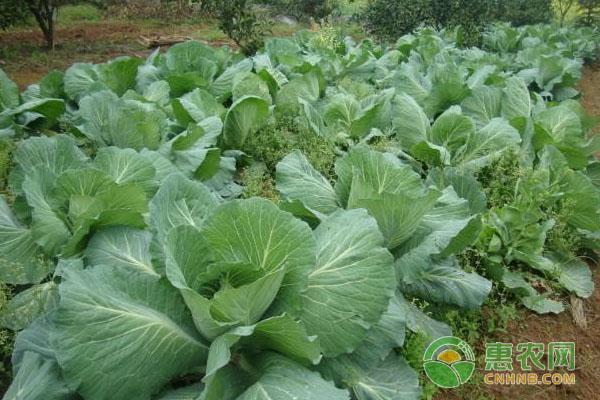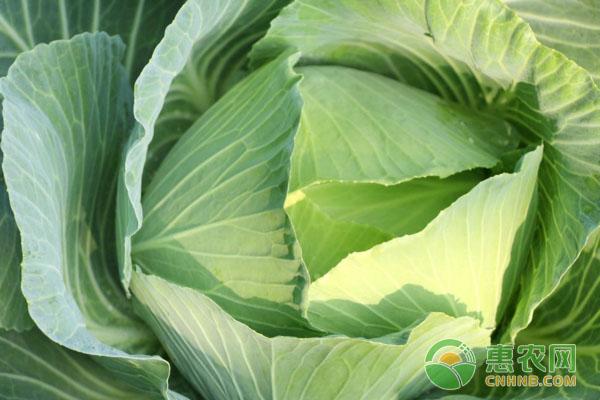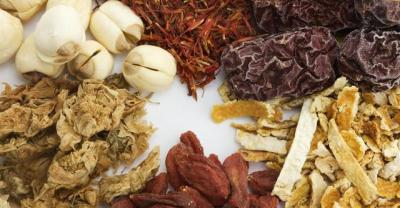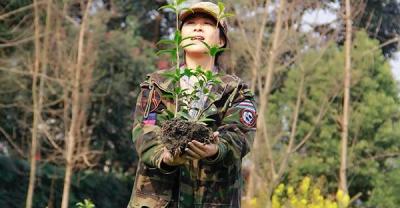Vegetable cultivation: round vegetable planting technology and fertilizer and water management
Cabbage, that is, our common cabbage, cabbage, broccoli, cabbage, and another elegant name is kale, which belongs to annual or biennial herbaceous plants and is a common vegetable in our life. Now the editor will talk about the planting technology and fertilizer and water management of round vegetables.

I. planting conditions
Round vegetables like mild climate, can withstand both high temperature and severe frost, and can adapt to the temperature of 7-25 degrees during the heading period of round vegetables, of course, the best temperature is 15-20 degrees, and the temperature that seedlings can bear is within-15 to 35 degrees. In the adaptation of planting round vegetables, it is necessary to ensure adequate soil moisture and air humidity, otherwise too dry will affect the heading and reduce the yield of round vegetables. And lettuce is also a fertilizer-loving, fertilizer-absorbing and durable vegetable. It needs more nitrogen in the seedling stage and rosette stage, and more phosphorus and potassium fertilizer in the heading stage. The proportion of nitrogen, phosphorus and potassium absorbed in the growing period is about 3:1:4. On the basis of sufficient nitrogen fertilizer, phosphorus and potassium fertilizer can be applied properly, which is beneficial to increase the yield of round vegetables.
2. Seedling raising techniques
It is necessary to raise seedlings and transplant round vegetables in planting. The seedbed should choose fields with convenient drainage and irrigation and loose and fertile soil, and then carry out deep ploughing, apply an appropriate amount of mature organic fertilizer and ternary compound fertilizer, pour water thoroughly before sowing, and flatten the border surface when the soil water content reaches a certain measurement. When leveling the border surface, sow 300 to 400 grams per mu of land, slightly press the soil, spray 50% carbendazim 500 times, and cover the sunshade with a small arch shed or greenhouse. When the seedlings grow to have three or four true leaves, a false planting will be carried out. During the breeding period, sunshade nets should be used to shade the sun from 9: 00 a.m. to 3: 00 p.m., when the weather is fine.
Third, transplant in time
Timely transplanting is beneficial to promote root growth. the seedling stage of early-maturing varieties is 20-25 days and that of middle-maturing varieties is 25-30 days. Before planting, the land should be prepared and the soil should be whitened. 1,000 to 2,000 kilograms of organic fertilizer and 30 to 50 kilograms of ternary compound fertilizer should be applied per mu of land as base fertilizer, and two or three kilograms of boron fertilizer and 20 to 30 kilograms of potassium magnesium sulfate should be applied at the time of planting. The width of the border includes a ditch depth of 1.0-1.2 meters, which is planted in two rows, with a distance of about 30 to 40 centimeters per plant and four or five thousand plants per mu. When cultivating round vegetables in late autumn, cold winter and spring, the ground should be covered with film to improve the ability of water retention and heat preservation.

IV. Fertilizer and water management
The growth period of round vegetables is relatively long, so it is necessary to apply more thin fertilizer in the early growth stage, especially in the rosette stage. After a week of planting, topdressing with 1% compound fertilizer or urea water, and then applying fertilizer thinly every other week, the amount of fertilizer in the rosette stage should account for 50% of the total amount of fertilizer applied during the whole period, and according to the growth situation, appropriately increase the amount of phosphorus and potassium fertilizer, apply high-quality ternary compound fertilizer 30 to 50 kg per mu, and then topdressing every other week, and gradually increase the amount of topdressing. Water should be watered immediately after topdressing, which is beneficial for the plant to absorb fertilizer and keep the soil moist.
V. Disease and pest control
The main pests of lettuce include cabbage green worm, beet armyworm, cabbage borer and diamondback moth, which can be controlled by chlorobenzamide; diseases including black root disease, quenching disease, virus disease, black rot disease and standing blight can be applied before planting, which can effectively improve the effect of drug use, first using carbendazim combined with fixed root water once or twice, and then using drugs in turn according to various diseases.
VI. Timely harvest
When the top of the bulb of the vegetable flattens, the harvest can be carried out. At the time of harvest, two or three pieces of old leaves from the lower part of the bulb should be left to protect the bulb and prevent damage to the bulb caused by extrusion in the process of transportation. it helps to improve the commercial value of the bulb.
Do not know the policy of benefiting farmers? The market is not clear? Do not understand the hot spots of agriculture, rural areas and farmers? Follow Henan Science and Technology News "New Agriculture, Countryside and Farmers" Wechat official account: hnkjbxsn, the information on agriculture, rural areas and farmers is all in hand. ) operator: Wang Yue MZ015
- Prev

Radix angelicae dahuricae and mulberry leaves
Angelica dahurica is the root of Angelica dahurica. The original medicinal materials are sun-dried and sliced for raw use; Radix angelicae dahuricae is warm and tastes pungent, returning to the lung, stomach and large intestine meridians. Its main functions are:.
- Next

How to plant cherry blossom potted plants matters needing attention in planting cherry blossoms bonsai
Cherry blossom potted plant how to plant cherry blossom bonsai-cherry blossoms are very beautiful, especially when most cherry trees blossom together.
Related
- Fuxing push coffee new agricultural production and marketing class: lack of small-scale processing plants
- Jujube rice field leisure farm deep ploughing Yilan for five years to create a space for organic food and play
- Nongyu Farm-A trial of organic papaya for brave women with advanced technology
- Four points for attention in the prevention and control of diseases and insect pests of edible fungi
- How to add nutrient solution to Edible Fungi
- Is there any good way to control edible fungus mites?
- Open Inoculation Technology of Edible Fungi
- Is there any clever way to use fertilizer for edible fungus in winter?
- What agents are used to kill the pathogens of edible fungi in the mushroom shed?
- Rapid drying of Edible Fungi

